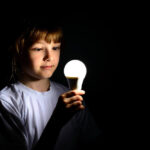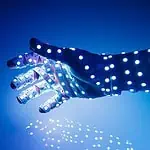Welcome to the world of Light Emitting Diodes (LEDs), where energy efficiency meets vibrant illumination.
LEDs have transformed how we light our homes, offices, and public spaces. It has brighter, longer-lasting, and more sustainable lighting options. These little wonders have come a long way. And these are the facts that make LEDs a suitable replacement for traditional incandescent bulbs and fluorescent tubes. It can be from the tiny LEDs that light up our smartphones to the giant LED screens that dazzle us in Times Square.
This comprehensive guide will explore everything you need to know about LEDs. You will learn about their history, working principles, applications, and benefits. So, whether you’re an engineer, a lighting designer, or a curious consumer, fasten your seatbelt and get ready to be enlightened!
What Are Light Emitting Diodes (LEDs)?
Light Emitting Diodes (LEDs) are small semiconductor devices. They emit light when an electrical current is passed through them. In contrast, traditional incandescent bulbs generate light by heating a wire filament. LEDs rely on the movement of electrons in a semiconductor material to produce light.
LEDs come in various colors, from red and green to blue and white. Moreover, LEDs offer several advantages over traditional lighting technologies. They include energy efficiency, a long lifespan, and small size. As a result, they have become increasingly popular in a wide range of applications. LED has covered everything from lighting and displays to automotive and aerospace technology.
Brief History of LEDs

Light-emitting diodes (LEDs) are ubiquitous in our modern lives. They are used in everything from traffic lights to electronic devices. Even for home lighting and automotive headsets. Yet their history dates back to the early 20th century.
In 1907, British scientist H.J. Round discovered a phenomenon called electroluminescence. Certain materials can emit light when an electric current is passed through them. Practical applications of electroluminescence didn’t develop until 1960.
Over the next few decades, researchers continued to improve LED technology. They created new colors and increased their brightness. Green and blue LEDs came into existence in the 1990s after yellow LEDs in the 1970s. In 2014, researchers at the University of California, Santa Barbara, created a white LED. It revolutionized the lighting industry.
Today, LEDs are used in various applications, including lighting, displays, and medical devices. They are longer-lasting and more energy-efficient than standard incandescent bulbs. That makes them a popular choice for consumers and businesses.
Advantages of LED Lighting

LED lighting offers several advantages over other types of lighting. This includes energy efficiency, cost savings, environmental benefits, durability, and design versatility. In this section, we will explore these advantages in more detail.
Energy Efficiency and Cost Savings
One of the most significant advantages of LED lighting is its energy efficiency. LEDs are far more efficient than incandescent bulbs or fluorescent lamps. Because they use less energy to produce the same amount of light. Meaning, LED lighting can save you considerable money on electricity bills. Hence, you can use them frequently.
According to the US Department of Energy, LED lighting can use up to 75% less energy than incandescent bulbs. It also lasts 25 times longer. This means that over the lifetime of an LED bulb, you can save hundreds of dollars in energy costs. Additionally, LED lights produce less heat. So, they are more efficient at converting energy into light and not wasting heat.
Environmental Benefits
Another significant advantage of LED lighting is its environmental benefits. LEDs are eco-friendly and have a lower carbon footprint than traditional lighting technologies. This is because they consume less energy, meaning less energy needs to be generated to power them.
Additionally, LEDs do not contain any hazardous materials like mercury. This is found in fluorescent lamps. The meaning is that LEDs are safer for the environment. Also, it is easier to dispose of than traditional lighting technologies.
Durability and Longevity
LED lighting is highly durable and long-lasting. LEDs are made from solid materials. And they do not contain any filaments or tubes, making them less likely to break or shatter. This makes them ideal for use in outdoor environments or areas with a risk of impact or vibration.
LEDs also have a longer lifespan than traditional lighting technologies. They can last up to 50,000 hours. This is significantly longer than incandescent bulbs or fluorescent lamps. This means you can save money on replacements and maintenance costs over time.
Design Versatility
Also, it works well in places that serve food and drink, where lighting is very important for setting the mood. LED lighting is highly versatile and can be used in various applications. They come in multiple sizes and shapes. Additionally, they are suitable for different purposes. Some prominent design patterns for LED lighting include-
- LED tube lights
- LED bulbs
- LED lamps
- LED strips
- LED neon flex
- LED recessed lights
- LED track lights
- LED spotlight, etc.
Besides, these LEDs are also used in exclusive decorative light fixtures like chandeliers and pendant lights. So, in terms of design, LED is the most versatile lighting option you will ever find.
Extensive Light Color Options
LEDs are available in various colors and color temperatures. You can choose warm, cool, or natural white lighting for your area with LEDs. Besides, it has a wide range of colorful lighting: red, blue, green, and yellow—whatever light color you want, LED is your ultimate choice. Besides, it provides color-adjusting features, such as RGB lights, addressable LED strips, and more. Thanks to the high-tech LED controller that makes this color-adjusting system possible. Thus, you can create different moods and ambiances for your area using LEDs. This further makes them ideal for use in commercial spaces and retail environments.
Instant On
LEDs provide instant light when turned on. But traditional light takes a few seconds to warm up before giving off full brightness. This makes them perfect for use in applications where instant light is needed. For example, traffic lights and emergency lighting.
How Do LEDs Work?

LEDs, or light-emitting diodes, are semiconductors. They have revolutionized how we light up our homes, offices, and streets. But how do LEDs work? Let’s delve into the basics of LED technology, including electron flow, p-n junctions, and many more.
- Basics of Electron Flow
To understand how LEDs work, we first need to understand some basic principles of electron flow. Electrons are negatively charged particles. They orbit the nucleus of an atom. In some materials, such as metals, electrons are relatively free to move around. It allows for the flow of electricity. In other materials, such as insulators, electrons are tightly bound to their atoms. And they do not move freely.
Semiconductor materials have some interesting properties. They fall somewhere between those of metals and insulators. They can conduct electricity, but metals are better. However, unlike insulators, they can be “tuned” to conduct electricity under certain conditions. This property makes semiconductors ideal for use in electronic devices.
- P-N Junction and the Role of Semiconductor Materials
Semiconductor material plays a crucial role in emitting light in LEDs. Silicon or germanium are usually used as semiconductor materials in LEDs. To make them conductive enough to produce light, you need to add impurities to the material in a process called doping.
Doping involves adding small amounts of impurities to a semiconductor material to change its electrical properties. There are two categories of doping: n-type and p-type. N-type doping involves adding impurities that have extra electrons to the semiconductor material. These extra electrons become free to move around in the material. It creates a surplus of negatively charged particles. P-type doping, on the other hand, involves adding impurities that have fewer electrons than the semiconductor material. This creates “holes” in the material or areas where an electron is missing. These holes are positively charged.
When a p-type material is placed next to an n-type material, a p-n junction is formed. At the junction, the excess electrons from the n-type material fill the holes in the p-type material. This creates a depletion region, or an area without free electrons or holes. This depletion region acts as a barrier to the current flow. This prevents the flow of electrons from the n-type material to the p-type material.
- The Importance of Doping and the Creation of a Depletion Region
Creating a depletion region is crucial to the operation of an LED. When a voltage is applied to the p-n junction, it causes the electrons in the n-type material to move toward the junction. At the same time, the holes in the p-type material move toward the junction in the opposite direction. When the electrons and holes meet in the depletion region, they recombine and release energy in the form of light.
The energy gap determines the precise wavelength of the light generated. It lies between the valence band and conduction band of the semiconductor material. Here, the conduction band is the band of energy levels in the material that electrons can occupy when they are not bound to an atom. On the other hand, the valence band is the energy level electrons fill when bound to an atom. And when an electron falls from the conduction band to the valence band, it releases energy as a photon of light.
- Electroluminescence and the Generation of Photons
Electroluminescence is a light-emitting phenomenon. It is the process of light emission from a material in response to an electrical current passing through it. In the context of LED technology, the electroluminescence process is conducted inside the LED chip.
An LED is a semiconductor device that emits light when a voltage is applied across its terminals. The LED is made of a p-n junction, a region where two semiconductors are combined. The p-type semiconductor has a positive charge carrier (hole). At the same time, the n-type semiconductor has a negative charge carrier (electron).
A forward bias voltage is applied to the p-n junction of the LED. And this causes electrons to join with electron holes to release energy as photons. The generated photons then travel through the LED’s layers. And they emit from the device as visible light. The color of the emitted light, however, depends on the energy of the photons. This is related to the bandgap energy of the materials used in the LED. For example, red LEDs are made from semiconductors with a lower bandgap energy. In contrast, blue and green LEDs require semiconductors with higher energy gaps. The below chart shows you the suitable semiconductors for different light colors in LEDs-
| Suitable Semiconductor | Color Of LEDs |
| Indium Gallium Nitride (InGaN) | Blue, green and ultraviolet high-brightness LEDs |
| Aluminum Gallium Indium Phosphide (AlGaInP) | Yellow, orange and red high-brightness LEDs |
| Aluminum Gallium Arsenide (AlGaAs) | Red and infrared LEDs |
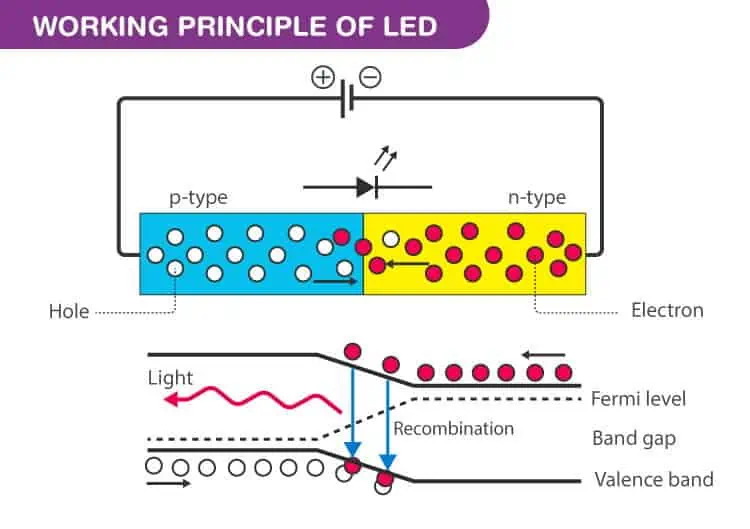
Types of LEDs
There are various types of LEDs (Light Emitting Diodes), some of which are:
1. Standard LEDs
Standard LEDs are also known as through-hole or traditional LEDs. They are the most common and widely used light-emitting diodes (LEDs). These LEDs are constructed with a small chip of semiconducting materials and are encapsulated in a clear epoxy resin package with two metal pins. These leads are arranged in a straight line. So, mounting them on a printed circuit board is quick and easy.
Standard LEDs emit light when an electric current is applied to the chip inside the epoxy resin package. The color of the light emitted depends on the material used in the chip. For example, LEDs made from Gallium Arsenide (GaAs) emit red light. At the same time, those made from Gallium Nitride (GaN) emit blue and green light.
One of the main advantages of standard LEDs is their durability and long lifespan. They can last for tens of thousands of hours. It is significantly longer than traditional incandescent bulbs. They are also highly energy-efficient. Additionally, they use up to 90% less energy than incandescent bulbs. They emit very little heat. This makes them ideal for applications where heat generation is a concern.
Standard LEDs are used in various applications. This includes lighting displays, automotive lighting, electronic equipment, and home appliances. They are also used in traffic lights and digital clocks. Furthermore, they are the ideal choice for other applications that require a reliable and energy-efficient light source.
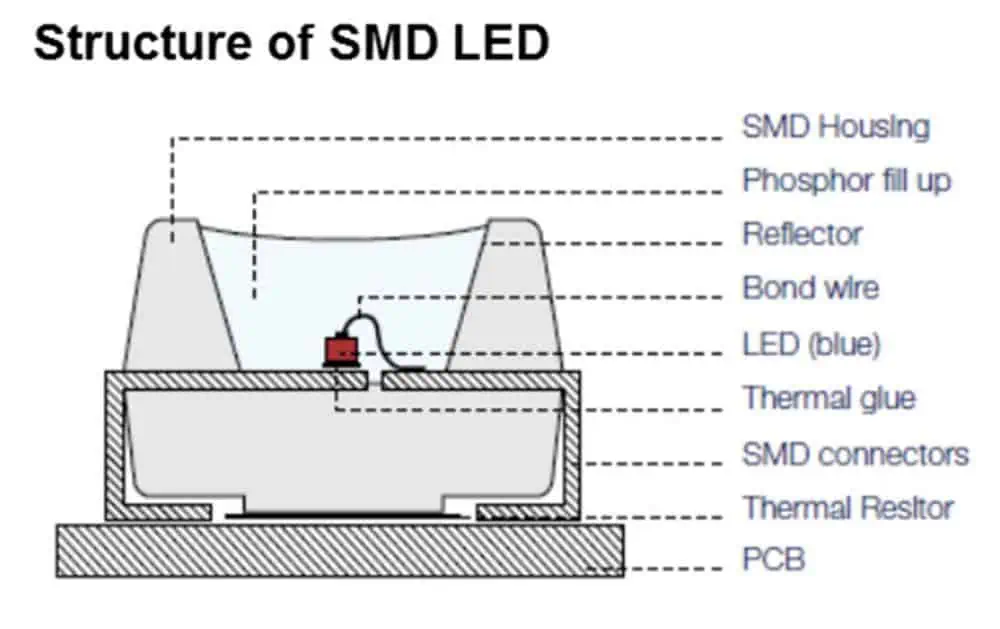
2. High-power LEDs
High-power LEDs are light-emitting diodes designed to produce high light output. At the same time, they consume low amounts of energy. They are ideal for lighting, automotive, signage, and electronics applications.
High-power LEDs differ from standard LEDs as their construction and design are relatively different. High-power LEDs are made up of multiple LED chips mounted on a single substrate. This helps to increase their overall brightness and output. Additionally, high-power LEDs use a larger heat sink. It dissipates the heat that the high output generates. Thus, it protects the LED from damage caused by excessive heat.
One of the major advantages of high-power LEDs is their efficiency. They produce a high amount of light output per unit of energy consumed. This makes them a popular choice for energy-efficient lighting applications. They are also more durable than traditional light sources. Also, they have a much longer lifespan. This reduces the need for frequent replacements and maintenance.
High-power LEDs are available in various colors and color temperatures. This makes them suitable for multiple applications like general, task, and specialty lighting. For example, grow lights for indoor plants, aquarium lighting, and stage lighting.
3. Organic LEDs (OLEDs)
Organic LEDs (OLEDs) are a lighting technology that uses organic compounds to emit light. OLEDs are similar to traditional LEDs. They emit light when an electrical current is applied. But the difference is in the use of materials.
Traditional LEDs use inorganic materials like semiconductors and metal alloys. On the contrary, OLEDs use organic compounds such as polymers and small molecules. These materials are deposited in thin layers on a substrate. And then stimulated by an electrical charge, causing them to emit light.
OLEDs offer several advantages over traditional lighting technologies. For one, they can be very thin and flexible. This makes them suitable alternatives for use in a wide range of applications. Everything from smartphones and televisions to lighting fixtures and signage is included. Additionally, OLEDs can be very energy-efficient. This means they can create lighting that consumes less power than traditional technologies.
One of the best things about OLEDs is that they can make bright, high-quality colors. OLEDs emit light directly from the organic materials themselves. Thus, they can produce a broader range of colors and better contrast than traditional LEDs. However, it relies on filters to produce colors. This makes OLEDs well-suited for use in applications like digital displays. Also, it is perfect for lighting fixtures where color accuracy is essential.
4. Polymer LEDs (PLEDs)
Polymer Light-Emitting diodes (PLEDs) use a conductive polymer material as the active layer. These organic materials have unique optical and electronic properties. This makes them ideal for light-emitting devices.
Traditional LEDs are made of inorganic materials. For example, gallium nitride and silicon. But PLEDs are made of polymers. These polymers are typically made of long chains of repeating units. It gives them unique properties.
PLEDs use an electric field to excite the electrons in the polymer material. This causes them to emit light. By adjusting the chemical make-up of the polymer material, the PLED can adjust the color of the light it emits.
One of the advantages of PLEDs is that they can be fabricated using low-cost, roll-to-roll processing techniques. This makes them highly scalable and cost-effective. This has led to their use of lighting, displays, and electronic devices.
Another advantage of PLEDs is that they can be made flexible and conformable. This makes them ideal for wearable electronics, such as smart clothing and skin-mounted sensors.
5. Quantum Dot LEDs (QD-LEDs)
Quantum Dot LEDs (QD-LEDs) use nanocrystals called quantum dots to produce light. These dots are typically made of semiconductor materials. And its size ranges from 2 to 10 nanometers. In a QD-LED, the quantum dots are sandwiched between two electrodes. An electrical current is passed through them, which excites the electrons within the dots. When these excited electrons return to their ground state, they release energy in the form of light. The size of the quantum dot determines the color of the light produced. Smaller dots produce blue light, and larger dots produce red light. And intermediate sizes produce green and yellow light.
One of the major advantages of QD-LEDs lighting is its ability to produce a wider range of colors. They also produce higher accuracy and efficiency. This is because the size of the quantum dots can be precisely controlled. This allows for more precise tuning of the emitted light. Additionally, QD-LEDs have a longer lifespan and consume less energy. This makes them more environmentally friendly.
However, QD-LEDs are still a new technology and have yet to be widely available. There are also concerns about the potential toxicity of the semiconductor materials used to create the quantum dots. These are typically made of cadmium or other heavy metals. The research into QD-LEDs continues. Researchers are developing safer and more environmentally-friendly materials for these devices.
6. Ultraviolet LEDs (UV-LEDs)
Ultraviolet LEDs (UV-LEDs) emit ultraviolet (UV) light. It is invisible to the human eye. UV-LEDs produce light in the ultraviolet spectrum. They are typically between 280 and 400 nanometers (nm). Moreover, it is divided into three categories:
- UV-A (315–400 nm)
- UV-B (280–315 nm)
- UV-C (100–280 nm)
UV-LEDs are used in various applications, such as curing, sterilization, and water purification. They are commonly used for curing adhesives and coatings in electronics manufacturing. Also, they can be used to cure inks and coatings in the printing industry and in the automotive and aerospace industries. Additionally, they are ideal in the medical sector for sterilizing equipment and surfaces.
However, it is crucial to keep in mind that UV light, including that from UV-LEDs, can be harmful to human health. Exposure to UV light can cause eye damage and skin cancer. So, you should use proper protective equipment when working with UV-LEDs. And it is a must to follow the safety guidelines the manufacturer provides.
For more information, you can read What Is The Difference Between UVA, UVB, And UVC?
How are LEDs made?

The manufacturing process for LEDs is quite complex. It involves a combination of wafer preparation, etching, encapsulation, and more. It also includes packaging technologies. But I will explain them in detail, but before that, let’s know about the materials used in this process-
Materials Used in LED Manufacturing
The materials used in LED manufacturing play a crucial role. They determine the performance and characteristics of the LED. Here are some informative facts about the materials used in LED manufacturing:
- Gallium Nitride (GaN) is a widely used material in LED manufacturing. GaN is a semiconductor material capable of emitting blue and green light. They are essential for creating white LEDs. It is also used as a substrate material in LED manufacturing.
- Indium Gallium Nitride (InGaN) is a ternary semiconductor material. It produces blue, green, and white LEDs. It is also used in the manufacture of laser diodes.
- Aluminum Gallium Indium Phosphide (AlGaInP) is a quaternary semiconductor material. It is used to manufacture red, orange, and yellow LEDs. It is also used in high-brightness LED applications like traffic and automotive lighting.
- Sapphire is a popular substrate material in LED manufacturing. It is a high-quality, single-crystal material. Thus, it provides a stable base for growing GaN crystals.
- Silicon Carbide (SiC) is a wide-bandgap semiconductor material used in high-power LED applications. It is also used in the manufacture of power electronics and high-temperature applications.
- Phosphors are materials that convert blue or UV light emitted by LEDs into other colors. These materials are commonly used in the manufacture of white LEDs.
- Copper is used as a heat sink material in LED manufacturing. It is an excellent conductor of heat and helps dissipate the heat generated by the LED.
- Gold is used as a wire-bonding material in LED manufacturing. It is an excellent conductor of electricity and has good corrosion resistance.
LED Manufacturing Process

The LED manufacturing process typically involves the following steps:
1st Step: Wafer Preparation
The first step in LED manufacturing is to prepare the substrate material by cleaning and polishing it. The substrate is then coated with a thin material called a buffer layer. This helps to reduce defects and improve the quality of the LED.
2nd step: Epitaxy
The next step is epitaxy. It involves growing a semiconductor material layer on top of the substrate. This is typically done using Metal Organic Chemical Vapor Deposition (MOCVD). Here a mixture of gases containing the semiconductor material is heated. And then it is deposited onto the substrate. The thickness of the epitaxial layer determines the wavelength of light that the LED will emit.
3rd step: Doping
Once the epitaxial layer has been grown, it is doped with impurities to create P-type and N-type regions. This is typically done using an ion implantation process. Here ions of the impurities are implanted into the semiconductor material using high-energy beams.
4th step: Contract Formation
After doping, the LED is coated with a layer of metal to form electrical contacts. The metal is typically deposited onto the LED using a technique called sputtering. Here a high-energy beam of ions deposits the metal onto the LED.
5th step: Etching
In this step, photolithography creates patterns on the LED surface. A photoresist layer is deposited onto the LED. Then a pattern is etched into the photoresist using ultraviolet light. The pattern is then transferred to the LED surface using dry etching. Here plasma is used to etch away the semiconductor material.
6th step: Encapsulation
The sixth step in LED manufacturing is encapsulation. Here the LED is encapsulated in a package that protects it from the environment and helps it dissipate heat. The package is typically made of epoxy, poured over the LED, and cured to form a hard, protective shell. The package also includes electrical contacts that connect the LED to a power source.
Final step: Testing
Finally, the packaged LEDs are tested to ensure they meet the desired brightness. Also, it ensures color and efficiency specifications. Any defective devices are discarded, and the remaining devices are shipped to customers.
Differences Between LEDs and Traditional Light Sources
| Feature | LEDs | Traditional Light Sources |
| Energy Efficiency | Highly Efficient; consumes less energy | Less efficient; consumes more energy |
| Lifespan | Longer lifespan; up to 50,000 hours | Shorter lifespan; up to 10,000 hours |
| Heat Generation | Low heat generation | High heat generation |
| Light Quality | High-quality light, available in many colors | Limited range of colors available |
| Size and Shape | Small and compact, available in various shapes | Bulky and limited shape options |
| Environmental Impact | Environmentally friendly, no toxic materials | Contain toxic substances |
| Instant On/Off | Instant On/Off | Slow to warm up and turn off |
| Cost | Higher initial cost, but cheaper in the long run | Lower initial cost, but the higher operating cost |
| Maintenance | Low maintenance required | High maintenance required |
| Compatibility | Compatible with electronic controls | Limited compatibility with electronic controls |
| Dimming | Dimmable with compatible controls | Limited dimming capability |
LEDs are highly efficient and consume less energy compared to traditional light sources. They also have a longer lifespan, up to 50,000 hours, and generate less heat. LED lights are available in various colors and provide high-quality light. They are also small and compact and come in multiple shapes. Moreover, LED lights are environmentally friendly and do not contain toxic materials.
Traditional light sources, on the other hand, are less efficient and consume more energy. They have a shorter lifespan, up to 10,000 hours, and generate significant heat. They also have a limited range of colors available. Traditional light sources are bulky and come in limited shapes. They contain toxic substances and have a high environmental impact.
LEDs are instant on and off and require low maintenance. They are also compatible with electronic controls and are dimmable with compatible controls. However, they have a higher initial cost, but they are cheaper in the long run. Traditional light sources have a lower initial cost but a higher operating cost. And it requires high maintenance. Thus, it has more compatibility with electronic controls. And have limited dimming capability.
For more information, you can read Advantages and Disadvantages of LED Lighting.
Understanding LED Performance
Understanding LED performance can be complex. It involves several technical specifications, factors, and testing procedures. Let’s discuss some essential LED specifications and aspects affecting LED performance. And also LED testing and certification.
LED Specifications
Here are the details of the LED specification:
- Luminous Flux
Luminous flux measures the amount of visible light emitted by an LED source. The unit of measurement for luminous flux is lumen (lm). A higher lumen value indicates a brighter LED. However, the luminous flux value alone does not provide information about the quality of light emitted. Other factors exist for that, i.e., color rendering, energy efficiency, etc.
For more information, you can read below:
Lumen to Watts: The Complete Guide
Kelvin and Lumens: Understanding the Differences
- Luminous Efficacy
The luminous efficacy of an LED source gauges how much visible light it produces. It measures power consumption per unit of time. The unit of measurement for luminous efficacy is lumen per watt (lm/W). A higher luminous efficacy number means that the LED is more efficient and makes more light for each unit of power it uses. LEDs with higher luminous efficacy can save energy and lower operating costs.
- Color Temperature
The color temperature gauges the light’s appearance in terms of color from an LED source. Kelvin is the unit of measurement for color temperature (K). LEDs can emit light in various color temperatures. It can range from warm white (2700K–3000K) to cool white (5000K–6500K). A slower color temperature value indicates a warmer (yellowish) light. At the same time, a higher one indicates a cooler (bluish) light.
For more information, you can read below:
How to Choose LED Strip Color Temperature?
Best Color Temperature for LED Office Lighting
- Color Rendering Index (CRI)
Color rendering index (CRI) measures how well an LED source can render colors compared to natural light. The CRI value ranges from 0 to 100, with a higher value indicating better color rendering. An LED with a CRI value of 80 or higher generally has good color rendering. In contrast, an LED with a CRI value below 80 may produce color distortions.
- Forward Voltage
Forward voltage is the voltage required to turn on an LED and make it emit light. The unit of measurement for forward voltage is the volt (V). The forward voltage of an LED varies depending on the LED type and manufacturing process.
- Reverse Current Leakage
Reverse current leakage is the current that flows through an LED in the reverse direction. It happens when voltage is applied in the opposite direction. The reverse current leakage of an LED should be as low as possible to ensure proper operation and a long life.
Factors Affecting LED Performance
LEDs, or Light Emitting Diodes, have become an increasingly popular choice. They have high efficiency, a long lifespan, and low energy consumption. However, there are a number of factors that can affect how well LEDs perform, such as:
- Thermal Management
A critical factor affecting the performance of LEDs is their ability to manage heat. LEDs are temperature-sensitive devices. If they are not cooled adequately, they can suffer degradation. This will reduce efficiency and shorten the lifespan. Therefore, it’s essential to ensure proper thermal management to maintain the LED’s performance.
- Drive Current
Another critical factor that affects LED performance is the drive current. LEDs operate at a specific current level. Exceeding this current can reduce their lifespan, decrease efficiency, and cause failure. On the other hand, under-driving an LED can result in lower light output and a shorter lifespan. Therefore, it’s crucial to maintain the correct drive current to ensure optimal LED performance.
- Aging
Like any other electronic device, LEDs also undergo aging. This can affect their performance over time. As LEDs age, their efficiency reduces, and their light output decreases. This process is known as lumen depreciation. And it can be accelerated by exposure to heat, humidity, and other environmental factors. Therefore, it’s important to consider the expected lifespan of an LED. Also, consider its expected degradation rate when designing a lighting system.
- Color Shift
Another factor affecting LED performance is the color shift. The LED’s color changes over time due to changes in the phosphor material. This can lead to an undesirable color shift in the lighting system. This makes it less appealing or even unusable for its intended purpose.
- Optics
The optics used in an LED lighting system can also significantly impact its performance. Proper optics can help distribute the light evenly. Thus, it maximizes the efficiency of the LED. In contrast, poor optics can cause light to be lost or scattered. It reduces the system’s overall efficiency.
LED Testing and Certification
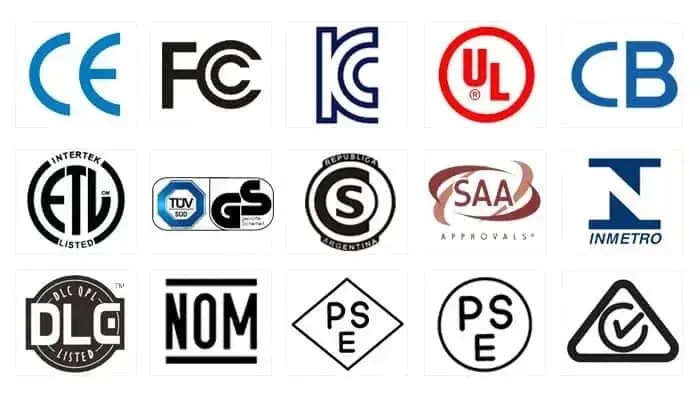
LED certification verifies that an LED product meets the industry’s quality and safety. It also verifies the performance standards. Certification is typically conducted by independent third-party organizations specializing in testing and certification.
- IESNA LM-80
IESNA LM-80 is a standard for measuring the lumen depreciation of LED products over time. It also measures the performance under different operating conditions. This standard helps to ensure that LED products maintain their quality & brightness over an extended period of use.
- ENERGY STAR
ENERGY STAR is a program that certifies LED products that meet energy efficiency and performance standards. LED products that receive ENERGY STAR certification are typically more energy-efficient than non-certified products. Thus, it can help consumers save money on energy bills. ENERGY STAR certification also indicates that a product meets high standards for performance and quality.
- Other Certifications
In addition to ENERGY STAR, there are other certifications for LED products. They include DLC (DesignLights Consortium) and UL (Underwriters Laboratories). DLC certification is focused on energy efficiency. It is often required for LED products to qualify for utility rebates. UL certification indicates that an LED product has been tested and meets safety standards.
For more information, you can read The Certification of LED Strip Lights.
Common Applications of LEDs
Some common problems regarding LEDs are:
Lighting And Illumination
LEDs are widely used in residential applications. For example, recessed, track, and under-cabinet lighting. They are energy-efficient and long-lasting. It makes them an ideal choice for households looking to reduce energy consumption. Also, it saves money on electricity bills.
LEDs are also commonly used in commercial lighting applications. They can be office, retail, or warehouse lighting. They offer a bright, consistent light that can help improve productivity. Also, they create a welcoming environment for customers.
LEDs are increasingly used in outdoor lighting applications. For example, streetlights, parking lot lights, and landscape lighting. They are energy-efficient, durable, and can withstand extreme weather conditions. This makes them an ideal choice for outdoor use.
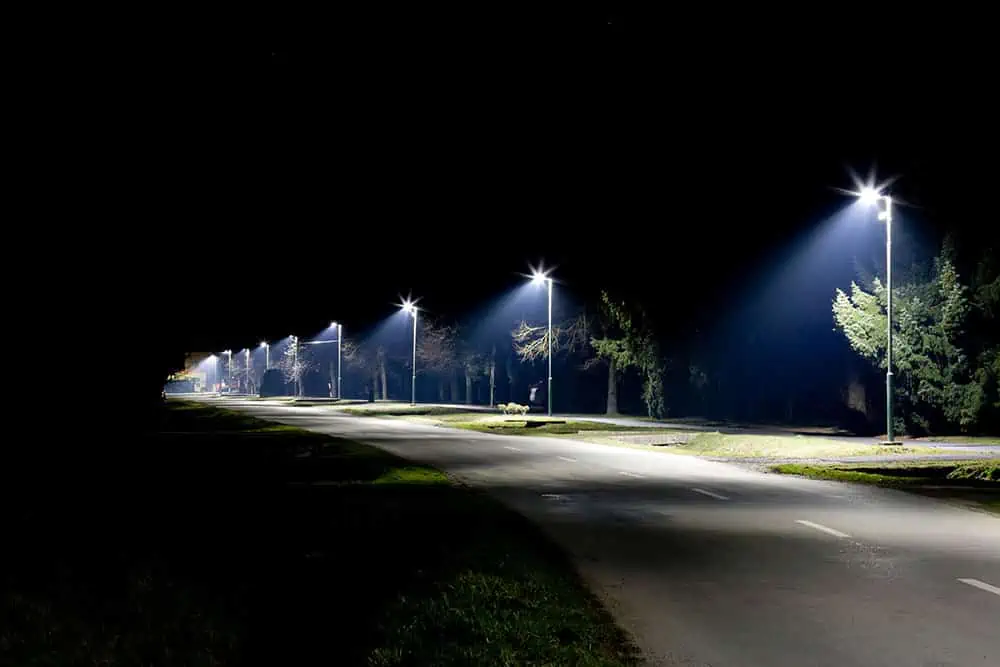
Display Technology
One of the most common applications of LEDs in display technology is digital signage. These displays are used for information, advertising, and entertainment in public areas. LED-based digital signage is preferred because it can produce high contrast. It also has high-resolution images with bright and vivid colors that are visible even in bright sunlight. This makes them perfect for outdoor advertising.
Another popular application of LEDs in display technology is in television sets. LED TVs use LEDs to backlight the screen. It provides improved picture quality and contrast. LEDs also make TVs more energy-efficient than traditional LCD TVs. This makes them more eco-friendly.
LEDs are also used in computer monitors, laptops, and mobile devices. LED-based displays are thinner, lighter, and consume less power than traditional displays. This makes them ideal for portable devices.
In the entertainment industry, LEDs are used in large-scale displays such as walls, floors, and ceilings. These displays provide immersive experiences for audiences. It excites the audience, whether at concerts, sporting events, or theme parks. They can be customized to display various colors and patterns. This makes them ideal for creating dynamic and engaging visual effects.
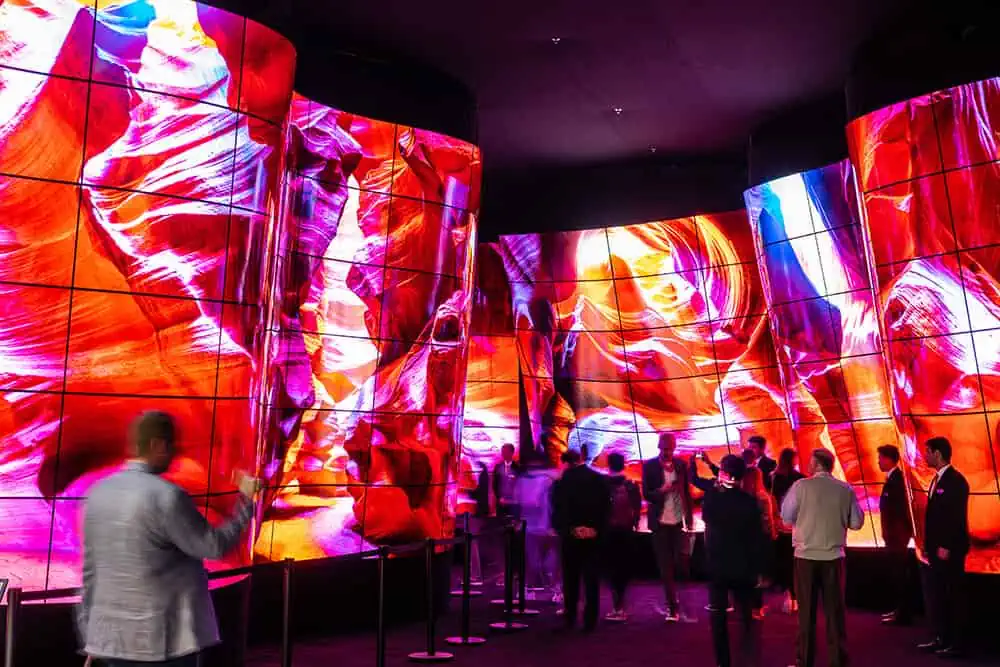
Automotive Industry
First and foremost, LEDs are commonly used in automotive lighting. They are used for headlights, taillights, brake lights, turn signals, and interior lighting. Another application of LEDs in the automotive industry is dashboard displays. Also, the instrument clusters. LED displays provide clear, bright, and customizable information for drivers. They can be set up to show information like speed, fuel level, and engine status, among other things.
LEDs are also used in safety features in automotives. They include daytime running lights, adaptive headlights, and backup cameras. Daytime running lights increase the visibility of vehicles during the day. At the same time, adaptive headlights change based on the speed and steering angle of the vehicle to provide the best lighting. And the backup cameras use LEDs to provide clear and bright images in low-light conditions.
LEDs are also used in the exterior styling of vehicles. Also, they can be used for accent lighting on the car’s body and illuminated logos and badges. Moreover, LED lighting can create dynamic lighting effects. For example, sequential turn signals and animated light displays.
Medical Equipment
The following are some standard applications of LEDs in medical equipment:
- Medical Imaging: The usage of LEDs in medical imaging devices is in X-ray machines, CT scanners, and MRI machines. LEDs are used as light sources for illuminating the body part being imaged. LED-based illumination offers a more accurate and brighter image. This is especially important for low-contrast images.
- Endoscopes: LEDs are used in endoscopes, which are used for minimally invasive surgeries. Endoscopes are equipped with miniature LED lights that illuminate the surgical site. The bright light produced by LEDs provides a clear image of the surgical site. It enables surgeons to perform procedures more precisely and accurately.
- Surgical Headlights: LEDs are used in surgical headlights. This provides bright, white light to illuminate the surgical site. LED-based surgical headlights offer several advantages over traditional halogen headlights. This includes a longer lifespan, lower heat generation, and more accurate color rendering.
- Phototherapy Devices: LEDs are used in phototherapy devices. It treats various skin conditions such as psoriasis, eczema, and acne. The blue light emitted by LEDs is effective in killing acne-causing bacteria. In contrast, red light effectively reduces inflammation and promotes wound healing.
- Dental Equipment: LEDs are also used in dental equipment, such as curing lights for dental fillings. These lights produce a high-intensity beam of light. This activates the resin in dental fillings, causing them to harden quickly.
Communication And Signaling
One of the most common applications of LEDs in communication and signaling is in traffic lights. LED-based traffic lights are more energy-efficient than their incandescent counterparts. It also has a longer lifespan. They are more visible in bright sunlight. They can be programmed to change colors more rapidly than traditional traffic lights.
Another common application of LEDs in signaling is in emergency vehicles. Such as police cars, fire trucks, and ambulances. LED lights are bright and visible from long distances. This makes them useful in emergencies where fast and clear signaling is crucial.
Runway and navigation LED lights are also used in aviation and marine signaling. LEDs are preferred over incandescent bulbs in these applications. Because they are more durable, energy-efficient, and have a longer lifespan. LEDs can also emit light in a specific direction. This makes them useful in directional signaling.
In telecommunications, LEDs are used in fiber optic communication systems. Fiber optic cables transmit data through light pulses. And LEDs are used as light sources for these systems. LED-based fiber optic systems are more efficient and have a higher bandwidth than traditional copper-based communication systems.
Maintenance of LEDs
LEDs require maintenance to ensure optimal performance. It needs care for a long lifespan like any other electrical device. Here are some tips for maintaining LEDs:
Cleaning LEDs
- Use the Right Cleaning Solutions: Avoiding harsh chemicals, such as solvents, is essential when cleaning LEDs. This may damage the LED’s delicate structure. Instead, use a mild detergent or isopropyl alcohol solution. Ensure that the cleaning solution is free from abrasive particles.
- Use the Right Tools: To clean LEDs, use a soft, lint-free cloth, such as a microfiber or lens cleaning cloth. Avoid using rough or abrasive materials like paper towels. This can scratch the LED surface.
- Be Gentle: When cleaning LEDs, be gentle and avoid applying excessive pressure to the surface of the LED. Avoid touching the LED with bare fingers. Oils and contaminants from the skin can transfer onto the LED surface. It reduces the brightness and lifespan.
Handling LEDs
Handling LEDs is also critical to ensure their long lifespan. Here are some tips for handling LEDs:
- Avoid touching the LED: When handling LEDs, it is essential to avoid touching the surface of the LED with your bare hands. The oils and dirt on your hands can damage the LED. Instead, use gloves or a clean, lint-free cloth to handle the LED.
- Avoid exposing LEDs to moisture: Moisture can damage the LED. Therefore, avoiding exposing the LED to moisture during handling is essential.
- Avoid exposing LEDs to heat: LEDs are sensitive to heat, and exposure to high temperatures can damage them. Therefore, avoiding exposing the LED to high temperatures during handling is essential.
- Store LEDs properly: LEDs should be stored in a cool, dry place to avoid exposure to heat and moisture.
Troubleshooting of LEDs

Like any technology, LED lighting also has its fair share of problems. I will discuss some of the most common problems with LED lighting and how to address them.
- Flickering
LED lights may flicker, especially when they are first turned on. It is annoying and distracting. Several factors can cause this problem. They include an incompatible dimmer switch and a faulty driver. Or it can be the power supply or improper installation.
To fix this problem, ensure the dimmer switch is compatible with LED lights. Replace any faulty components, and ensure proper lighting fixture installation.
- Glare
LED lights can produce glare, which can be uncomfortable and cause eye strain. Several factors can cause this problem. Such as the placement of the light fixture, the type of bulb used, and the design.
To address this problem, use frosted or diffused lenses to reduce glare. Adjust the placement of the light fixture, and choose bulbs with lower brightness.
- Wrong Color Temperature
LED lights can produce light with different color temperatures. It can affect the environment and ambiance of a room. For example, some LED lights may produce a harsh, bluish-white light that can be uninviting. Again, choosing a warm color for the office lighting will make the employee sleepy.
To address this problem, choose LED lights with a color temperature that suits the desired ambiance of the room. For example, a warm, yellowish light may suit a bedroom. In contrast, a cooler, bluish-white light may suit a work or study space.
- Heat
LED lights can produce heat, reducing their lifespan and performance. Several factors can cause this problem. For example, inadequate cooling or ventilation. Also, there can be a high ambient temperature and excessive current flow.
Ensure the LED lights are adequately cooled and ventilated to address this problem. Avoid installing them in areas with high ambient temperatures. Also, ensure the current flow is within the recommended range.
- Compatibility
LED lights may not be compatible with existing lighting fixtures or systems. This makes their installation and use challenging. Various factors can cause this problem, for example, differences in voltage, wattage, and design.
To solve this problem, make sure that the LED lights work with the existing lighting systems and fixtures. Or consider replacing the fixtures and systems if necessary.
Understanding these problems and taking appropriate measures to manage them. Thus, you can enjoy the many benefits of LED lighting without any inconvenience.
For more information, you can read Troubleshooting LED Strip Problems.
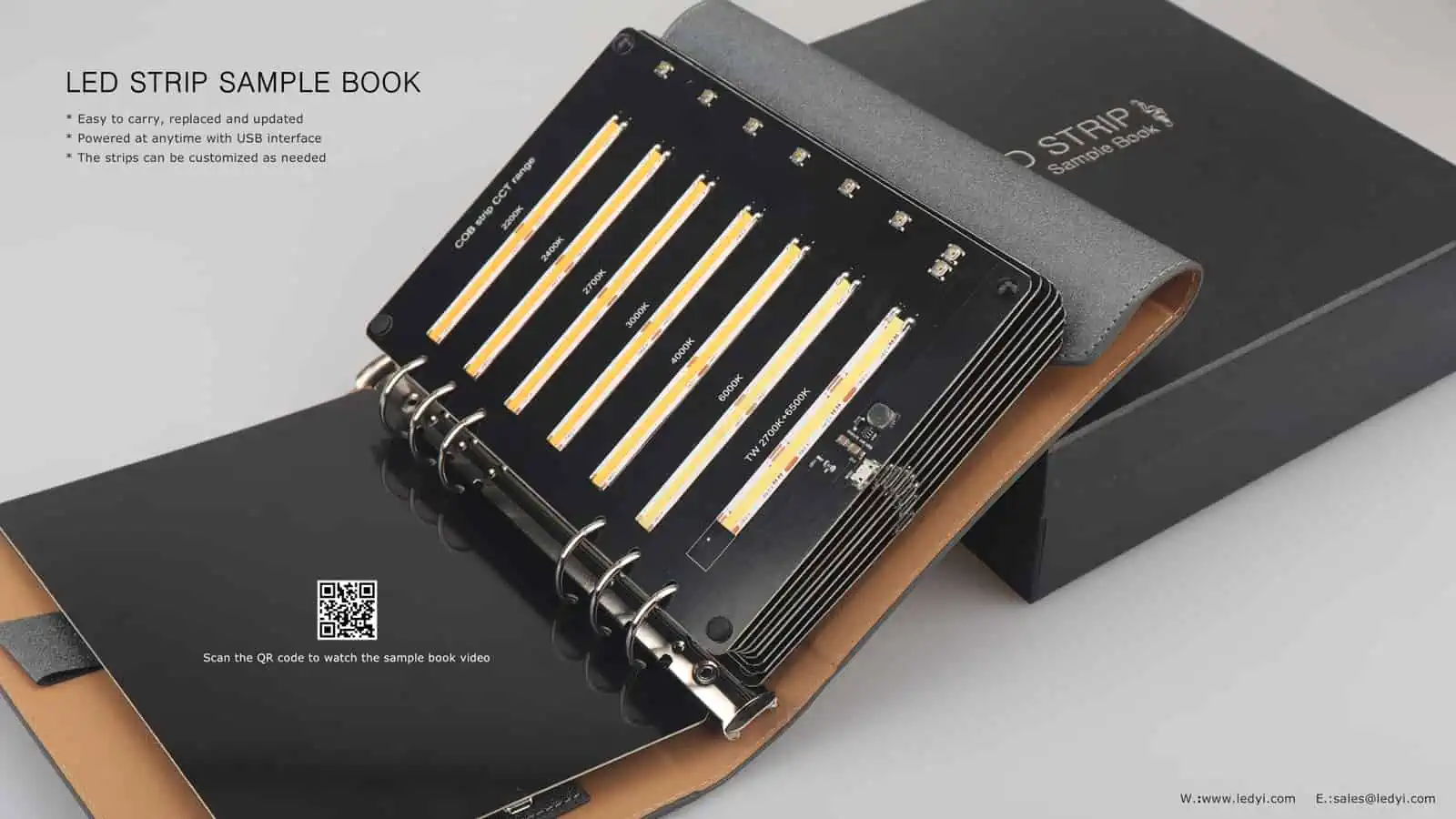
Future Developments in LED Technology
Let’s have a look at the future improvements in LED technology.
1. Improvements in Energy Efficiency
Here are some key improvements in energy efficiency in future developments in LED technology:
- Higher Efficacy
LED efficacy measures how efficiently a light source converts electricity into electric light. LED efficacy has steadily improved in recent years due to material science. Also, the device design advancements enhance effectiveness. For example, it is developing new semiconductor materials, such as Indium Gallium Nitride (InGaN). It has led to higher efficiency blue and green LEDs, which are critical components in white LEDs. And in the coming years, more innovations will make LEDs much more efficient.
- Better Thermal Management
As LEDs become more efficient, they also generate more heat. This can reduce their performance and lifespan. However, advancements in thermal management techniques improved the dependability. Like, better heat sinks and materials with higher thermal conductivity. The improvement of these techniques will enable LED manufacturers to improve their performance in the future. It will also improve the trustworthiness of their products.
- Smarter Control Systems
LED technology is also helped by advanced control systems that make the best use of energy and waste less. For example, LED lighting systems can be equipped with sensors. These sensors detect occupancy. They also adjust lighting levels automatically. Thus it dims the lights in response to natural light levels. And in future years, we expect more such automated sensing features in LEDs.
- Integration with Other Technologies
Finally, LEDs are increasingly integrated with other technologies, like Internet of Things (IoT) sensors. It creates smart lighting systems that adapt to changing environments and user needs. This integration can help save even more energy by letting lighting systems be controlled more precisely and efficiently.
2. Advancements in Manufacturing Techniques
Let’s discuss the advancements in manufacturing techniques. These advancements are driving future developments in LED technology.
- Chip Scale Package (CSP) LEDs
CSP LEDs are a new type of LED that eliminates the need for traditional packaging materials. For example, lead frames and wire bonds. This reduces the size and weight of the LED, making it ideal for use in compact devices. CSP LEDs are also more efficient, as they have a shorter distance for the current to travel. They also reduce energy loss.
Furthermore, manufacturing CSP LEDs requires specialized equipment. For example, die-bonding machines and wafer-level packaging machines. Nowadays, they are becoming more widely available.
For more information, you can read CSP LED Strip VS COB LED Strip.
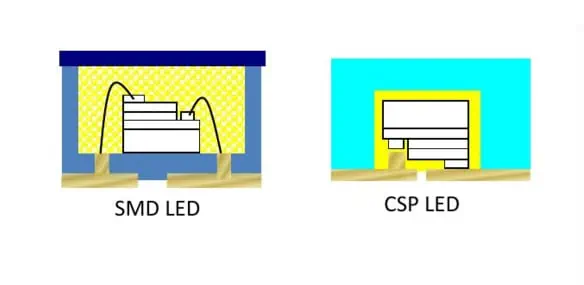
- Micro-LEDs
The development of new colloidal synthesis techniques and the integration of QDs into LED manufacturing drive the future developments of LED technology. Micro-LEDs are smaller than CSP LEDs, with a size of fewer than 100 micrometers. They offer higher resolution, brighter colors, and better contrast than traditional LEDs. Manufacturing micro-LEDs is challenging due to their small size. Still, technological advancements are making it possible to produce them in large quantities. Such as microfabrication, lithography, and wafer bonding.
- Quantum Dots (QDs)
Quantum Dots are semiconductor nanocrystals that emit light when stimulated by a light source. They offer better color accuracy and brightness than traditional LEDs. And they can be tuned to emit specific colors. QDs are manufactured using a technique called “colloidal synthesis.” It involves creating a suspension of nanocrystals in a liquid. The nanocrystals are then deposited onto a substrate to create the LED.
- 3D Printing
3D printing is a manufacturing technique that involves creating objects layer by layer. It offers greater flexibility in design and the ability to create complex shapes. 3D printing can be used to create custom LED shapes and housing. It reduces the need for traditional manufacturing techniques such as injection molding. 3D printing is also more environmentally friendly. It reduces waste and the need for transportation.
3. The Potential for Fully Organic LEDs
Fully organic LEDs (FOLEDs) is a type of OLED that does not require any inorganic materials. For example, metals, which are commonly used in traditional LED technology. FOLEDs have several advantages over traditional LEDs. They are more flexible, lightweight, and consume less energy than traditional LEDs. Additionally, FOLEDs can be made using low-cost and environmentally friendly materials. This makes them an attractive option for developing sustainable technologies.
The potential applications of FOLEDs are vast. They include lighting, displays, and even wearable technology. In the lighting industry, FOLEDs have the potential to replace traditional light sources. It can replace fluorescent and incandescent bulbs. FOLEDs can be made into thin, flexible sheets. This makes them ideal for curved or irregularly shaped surfaces. For example, architectural or automotive lighting.
In the display industry, FOLEDs offer several advantages over traditional LED displays. FOLEDs are thinner, lighter, and less powerful. This makes them ideal for portable devices such as smartphones and tablets. Additionally, FOLED displays offer better color accuracy and a wider viewing angle. Thus, they are ideal for high-end display applications like televisions and computer monitors.

FAQs
LEDs (Light Emitting Diodes) can last 25,000 to 50,000 hours. It is significantly longer than traditional incandescent and fluorescent bulbs. However, with proper usage & maintenance, you can extend the durability of LEDs.
LEDs can initially be more expensive than traditional lighting. But they are more energy-efficient. They have a longer lifespan and can save money on energy bills. As technology has improved and become more widespread, LEDs cost has decreased. It is making them more cost-effective.
LEDs are more energy-efficient. It uses less electricity and emits less heat than traditional lighting. Another plus point of LED is that it emits less greenhouse gas than traditional lighting and helps conserve natural resources. They also do not contain harmful materials like mercury. This toxic material is found in some conventional bulbs, but no worries with LEDs.
Yes, LEDs can be used outdoors. They suit various outdoor applications, including streetlights, landscaping, and security lights. But for outdoor usage of LEDs, ensure they have a suitable IP rating. A higher IP rating will protect the LED from adverse weather conditions like-dust, storms, rain, wind, etc.
LEDs are solid-state lighting devices. It emits light when electricity is passed through a semiconductor material. OLEDs (Organic Light Emitting Diodes) are made of thin layers of organic material. It emits light when an electric current is applied. OLEDs have a broader range of colors, better contrast, and are thinner and more flexible than LEDs.
LED lights can flicker for various reasons. These include an incompatible dimmer switch, voltage fluctuations, or a faulty driver. Poor-quality LED lights may also flicker due to cheap components or inadequate design.
Yes, you can replace traditional lighting with LEDs in your home. LEDs are available in various styles and sizes. They are also available in bulbs that fit standard light fixtures. Thus, making it easy to switch to LED lighting.
The future of LED technology looks bright, with continued efficiency improvements. Also, the lifespan and color rendering. We can expect to see even more innovative applications as LEDs become more widespread. For example, smart lighting systems. Smart lighting can be controlled remotely or integrated with other smart home devices.
Yes, LEDs can be dimmed using compatible dimmer switches. However, not all LED bulbs are compatible with all dimmer switches. So, checking compatibility before making a purchase is essential.
COB (Chip on Board) LEDs consist of multiple LED chips mounted directly onto a circuit board. At the same time, SMD (Surface Mount Device) LEDs are individual diodes mounted onto a surface. COB LEDs provide more uniform lighting and higher brightness. On the contrary, SMD LEDs are more energy-efficient and cost-effective.
LEDs do not emit significant amounts of UV or infrared radiation. They are safer than traditional lighting sources that can emit harmful rays.
Yes, LEDs are more energy-efficient than traditional incandescent and fluorescent lighting. They use up to 80% less energy. Thus, lowering energy bills and reducing greenhouse gas emissions.
LEDs have specific voltage requirements, like- 12V or 24V. And when voltage exceeds this limit, they get overheated, causing damage to the fixture. This can hamper the soldering of the diodes and cause issues such as flickering, sudden dimming, or complete shutdown.
LEDs are tiny, energy-efficient semiconductor devices that emit light when an electrical current is supplied to them. Because of their extended lifespan, low energy consumption, and durability, they are extensively utilized in a variety of applications such as lighting, displays, indicators, and more.
LEDs function by transferring an electrical current through a semiconductor material, which is commonly a mix of gallium, arsenic, and phosphorus. When electrons in a semiconductor recombine with holes, they emit light and release energy in the form of photons.
LEDs provide a number of advantages over incandescent and fluorescent lights, including:
LEDs use substantially less electricity than incandescent and fluorescent lights, resulting in cheaper energy expenditures and a lower carbon impact.
LED lights often have a lifespan of tens of thousands of hours, minimizing the need for regular replacements.
LEDs are more resistant to shocks, vibrations, and temperature changes, making them suited for use in a variety of situations.
LEDs, unlike other older lighting alternatives, switch on promptly and attain maximum brightness rapidly.
LEDs may be created in a variety of colors, and their brightness can be readily regulated, making them perfect for a wide range of applications.
LED lights are more ecologically friendly than traditional lighting solutions because of their energy efficiency, extended lifespan, and lack of harmful elements such as mercury, which is present in CFLs. Also, the decreased energy usage of LED lighting helps to minimize greenhouse gas emissions.
Absolutely, although not all LED lights are dimmer switch compatible. When selecting an LED light for use with a dimmer switch, be sure it is clearly labeled as dimmable. To eliminate flickering or other performance concerns, you may also need to install an appropriate LED dimmer switch.
The color temperature of the light output, measured in Kelvin, is referred to as cool white, warm white, and neutral white LED lights (K). Warm white has a lower color temperature (below 3000K) and emits a yellowish-white light, whereas cool white has a higher color temperature (over 5000K) and emits a blueish-white light. Neutral white is somewhere in the middle (about 3500K-4100K), giving a more balanced, natural light.
When selecting an LED light, consider elements such as the light’s function, required brightness (measured in lumens), color temperature, energy efficiency, and whether or not the light should be dimmable. Also, consider the individual fixture or fitting and ensure that the LED light is compatible with it.
Although LED lights have a long lifespan, they must ultimately be discarded. These may be disposed of with typical household rubbish since they do not contain dangerous compounds such as mercury. But, LED light recycling programs are becoming more common, and it is always advisable to recycle them whenever feasible. For proper disposal instructions, contact your local waste management agency or recycling center.

Conclusion
It’s important to note that LED technology is still evolving. And there is room for improvement in performance, color quality, and affordability. Because of this, scientists and engineers are always looking for ways to improve LED technology. They are trying to improve its efficacy.
As a consumer or business owner, understanding the basics of LED technology can go a long way. It can help you in making informed choices when it comes to purchasing lighting products. From color temperature to lumens, wattage, and CRI. Knowing these concepts can help you find the right LED lighting solutions.
Therefore, LEDs are a fascinating technology. With their energy-saving capabilities, durability, and versatility, LEDs are a lighting technology that is here to stay.
LEDYi manufactures high-quality LED strips and LED neon flex. All of our products go through high-tech laboratories to ensure the utmost quality. Besides, we offer customizable options on our LED strips and neon flex. So, for premium LED strip and LED neon flex, contact LEDYi ASAP!
